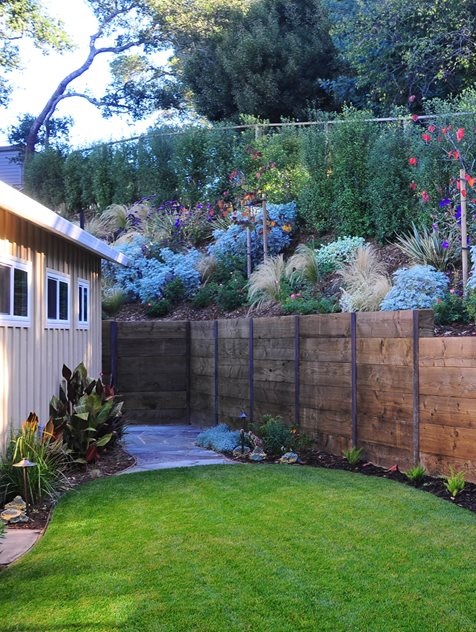Wood Retaining Walls
Request A Free Quote!
Stone Retaining Walls
While wood retaining wall surfaces are not the most usual layout selection, they can use your property a natural as well as rustic appearance, and also there are a range of layout choices that we can develop for you making use of timber. You can even integrate wood with natural rocks or blocks, improving and diversifying your property’s look much more.
Calgary Retaining Walls understands that each property and project is unique, which is why we function closely with you to make sure that your retaining wall checks every one of your boxes as well as optimizes your property in all the best ways.
Calgary Retaining Walls professional group of retaining wall building contractors can help you to develop retaining walls that are suited specifically for your backyard or job location, as well as can even include features such as integrated seats, yards, patio areas, as well as extra. Do not hold anything back– allow us recognize exactly what you’re seeking in terms of your retaining wall style, and we’ll do every little thing within our power to make certain that dream becomes a reality.
Calgary Retaining Walls works carefully with you to provide the best quality retaining walls in the area at prices that help your budget plan and won’t cost a fortune. We know exactly how important it is to keep your residence risk-free with retaining walls as well as enhance the look as well as performance of your property. Straight, curved, on different degrees– we can make your retaining wall work for exactly what you require it to do.
We cannot wait to collaborate with you on creating your customized, personalized retaining wall and obtain your job completed to ensure that you can appreciate your property to the optimum.

How Wood Retaining Works:
Lay the first course. Cut a beveled trench into the slope, wet the trench, and tamp well. Set the first timber into place and level it. This course will be completely buried in the ground. We planned our wall to turn a corner; the same techniques apply to a straight wall.
Build up. Set a second timber on top of the first and bore a hole through the two timbers. Drive 3/4-inch reroof through the holes and into the ground.
Stagger joints. Continue to place the timbers, staggering joints from one course to the next. Drill holes and use reroof to pin each timber to the one below on each side of every joint. When needed, cut timbers with a sharp chain saw; wear goggles to protect your eyes from flying chips.
For drainage, drill weeps holes every 4 feet along the wall’s length. One row of holes about a foot above ground is fine. Instead of drilling holes, you also can provide drainage by leaving 1-inch gaps between ends of timbers.
If you’re considering adding a timber retaining wall to your property, you’re in the right place. Building a timber retaining wall comes with many benefits that you’re sure to love. The main purpose of a retaining wall is to create a strong structure that will stabilize the soil and rocks behind it, and timber is a perfect material for accomplishing the job. Another common retaining wall material is concrete; however, you’ll quickly discover why timber is an even better overall option in terms of cost, strength, appeal, and effectiveness.
Here are 6 terrific benefits of timber retaining walls:
- Natural Charm
- Durable
- Cost Effective
- Prevent Flooding & Erosion
- Increase Yard Space
- Quick Construction
Overall, timber is the perfect match towards strong, eye-catching, affordable retaining wall.
Frequently Asked Questions
Wood Retaining Walls FAQs
Building a wood retaining wall helps to reshape slopes on your property to create level areas for driveways, gardens, paver patios, children’s play areas, and decks. Retaining walls also keep soil and vegetation away from established structures.
The best kind of lumber for these walls is Douglas fir pressure treated with preservatives to discourage rot. It will be green or brown in color and rated for earth-to-wood contact. For timber walls, large timbers for can be very expensive, which is why railroad ties are a common alternative.
A timber retaining wall can last a little over a decade, if treated properly. If not maintained, the lifespan of a timber wall is around 3 to 5 years. To keep its fresh look, timber requires serious maintenance. The material will hold up for so many years only if its pressure-treated with chemicals.
One way to protect wood is to use a wood preservative, which forms a tough barrier to for moisture and rot to break down over an extended period. You can apply wood preservative using a paint brush, use a solid insect repellant like creosote or weather sealer.
Ensure good drainage. Effective drainage is vital for a retaining wall, otherwise water pressure known as hydrostatic pressure will build up behind the wall and lead to bulging or cracking.
